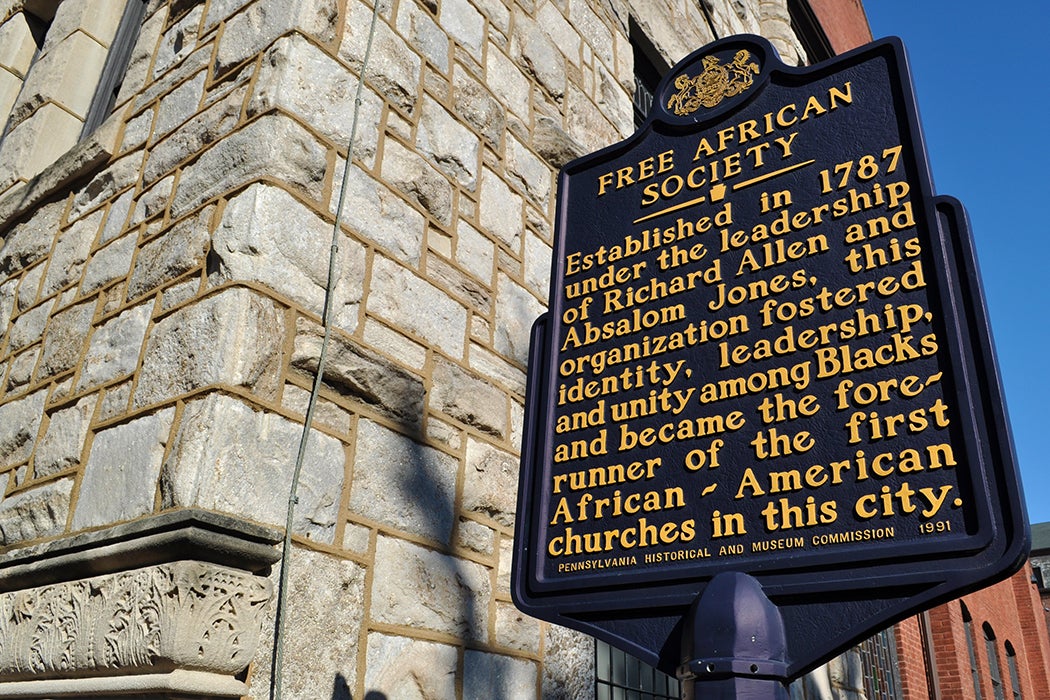The United Order of the Tents, a secret society for Black women dating back to the nineteenth century, has been in the news lately as its members fight to save their Brooklyn headquarters. Though often obscured in history, organizations like the Tents served an important role, supporting (and in many cases, continuing to support) powerful systems for organizing and fighting for civil rights. As historian Paul Lawrence Dunbar writes, “Because there were few opportunities for blacks to participate in the wider society; political, social, and educational goals found an outlet in the institutions of the black community.”
As Dunbar explains, Black people in North America began organizing as early as 1693. People enslaved in Massachusetts united in the Society of Negroes, which, although an organization for Black people, was created under the leadership of Cotton Mather, a minister and slave owner. As such, the group was less concerned with freedom than benevolent societies that would follow it. For example, its rules strictly prohibited providing shelter or aid to those who escaped from slavery.
Groups that were established by and for free Black people had other ideas.

The Free African Society of Philadelphia and the African Free School of New York were both established in 1787. The former provided mutual aid, while the latter “was founded to educate New York City’s black children.” Both of these organizations chose to include “African” in their names, signaling something new as well.
“The names given to these early black organizations and institutions illustrate the importance places on maintaining their African heritage,” Dunbar explains.
Though many of these societies required membership dues, so not all Black people could afford to participate, because of the number of them, “membership was possible for a substantial number of [B]lacks because of the large number of groups and the different levels within the groups.”
Even so, the cost could be prohibitive, Dunbar acknowledges. “During the 1830s, the initiation fees to join an organization ranged from one to eight dollars, and the monthly membership dues were from 12 to 25 cents, which was somewhat excessive for some [B]lacks.”
Though not strictly religious groups, many of these early organizations were associated with churches, some more closely than others. The Union Traveller’s Association, for example, functioned as a church, so much so that the mayor of Richmond cautioned its members against holding religious services “without the presence of a white minister.” Another, the African Union Society in Rhode Island, operated out of a church and “recorded births, marriages, and deaths as well as provided decent burials for blacks.”
In post-Civil War America, benevolent societies also found a foothold aiding people freed from slavery. As Dunbar writes, after the war, black people were “left to fend for themselves.” Benevolent societies were able to help those that the newly created Freedman’s Bureau could not. Groups like the Odd Fellows, Knights of Pythias, and Prince Hall Masons saw their membership numbers soar, explains historian Joe W. Trotter, with some having “quite large memberships by the early twentieth century: Odd Fellows (304,000), Pythians (250,000), Masons (150,000).” These organizations “not only [aided] in the transition of blacks from slavery to freedom, but also from farm to factory and from the South to the urban North and West.”
As both Dunbar and Trotter point out, for a long time, academic study of these societies was largely absent. Some of this can be attributed to the role of the church, Trotter explains, as the religious institution is “often portrayed as the incubator for other black institutions and organizations.” While there is a connection between secular societies and the church, influence went both ways. The African Methodist Episcopal Church, for example, “actually emerged from the work of Philadelphia’s free African Society,” Trotter notes.
Weekly Newsletter
Another reason for their historical absence is likely due to the reason that many other parts of history have been understudied— bigotry. Early scholars saw these groups as “child-like imitations of Euro-American culture,” Dunbar writes. They were referred to as “ape lodges,” and their work discounted.
In more modern times, researchers have seen these societies in a different light, noting how vital they’ve been in the fight for equality. These societies, Trotter writes, were instrumental in shaping Black identity, “[they] protected members against poverty and other misfortunes; and supported movements for social change.”
Support JSTOR Daily! Join our new membership program on Patreon today.







